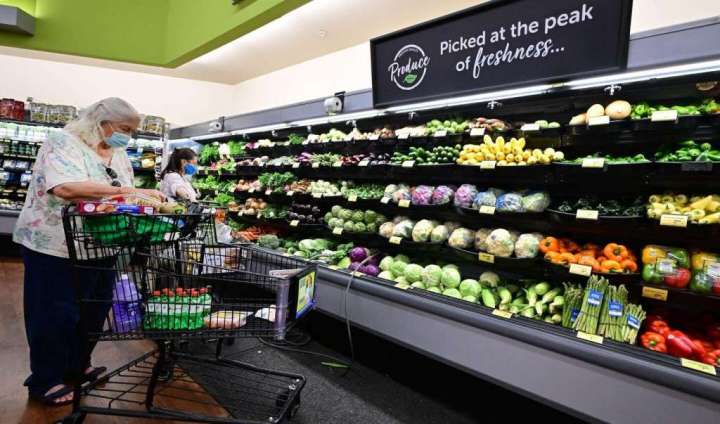With inflation at the highest level in 40 years, your emergency fund just got elevated to “stat” status. It has always been the case that you need a rainy-day fund, because it’s not a matter of if you’ll have a financial emergency, but when. For millions of Americans, that when is now.
Inflation is soaring. Time to rethink your emergency savings.

Inflation skyrocketed to 9.1 percent in June, according to the most recent consumer price index report released by the Bureau of Labor Statistics. It was the largest 12-month increase since the period ending November 1981. Gas, housing and food costs were the largest contributors to the increase in consumer prices.
As with any economic downturn, the more affluent may complain, yet they can still weather rising prices without any significant pain. Many other Americans will experience financial discomfort (some will suffer more distress than others) and will establish new measures of austerity, such as cutting streaming services, eating out less or canceling vacation plans. And then there are those less fortunate who are already struggling. They will see their precarious situations get worse.
As inflation continues to soar, Americans need to rethink how they handle their emergency savings, says Kia McCallister-Young, director of America Saves, an initiative of the Consumer Federation of America.
She provided some guidance on what folks should do whether they are struggling, have some savings, or have a well-funded emergency account. “A lot of us are still recovering from the pandemic, so getting an understanding of where you are within those three categories is the first step in determining what you can do,” she said in an interview.
No savings
No doubt you’ve heard the standard advice to aim to save three to six months’ worth of living expenses. To do that, you start by adding up your monthly expenses, including everything from your rent or mortgage payment and auto loan to average grocery and utility expenses. If your bare bones monthly expenses total $3,000, having an emergency fund for three months would mean saving $9,000.
“The reality is that this can feel daunting to many and impossible for some,” McCallister-Young said. Instead, America Saves recommends starting with a $500 goal. Even a modest amount in a time of a financial setback is better than nothing.
One easy way to reach this initial goal is to save automatically by diverting some of your direct deposited paycheck into a dedicated emergency savings account. Or you can have your financial institution do an automatic transfer for you.
Finding the money may require more cost cutting or taking on a second job. There are a lot of employers looking for workers. Employers added 372,000 new positions last month, the Bureau of Labor Statistics reported.
“Private-sector employment has recovered the net job losses due to the pandemic and is 140,000 higher than in February 2020,” the agency said. “In June, notable job growth occurred in professional and business services, leisure and hospitality, and health care.”
Some savings
You were doing well. You managed to save a few months’ worth of living expenses or even hit that benchmark of six months. But rising prices have forced you to dip into your emergency fund.
If you haven’t already, take an assessment before all the savings are gone, McCallister-Young said. “Now is the time to get a clear view of your finances,” she said. “Look at your recent income, monthly expenses and savings contributions, then adjust where you can and do what makes sense for right now.”
America Saves can help you take a deep dive into your budget. The organization is holding a free virtual workshop on July 28 at 2 p.m. Eastern time. You can find information about the workshop at AmericaSaves.org. Search for “6 Steps To Establishing A Spending & Savings Plan.”
Take advantage of the free financial coaching and counseling through America Saves, which can help you identify resources to help with your situation. “We really want people who have low-to-moderate income to take advantage of that because we pair them with someone in their local community who has access to those resources,” McCallister-Young said.
Strong savings
Despite rising inflation, you have more than enough in your rainy day fund. You might have juiced up your savings during the pandemic because you couldn’t spend. Or you greatly reduced your expenses because you could work from home and may still be teleworking.
If you’re in this group, you may be able to afford to increase your savings. During an economic downturn, fortunes can change quickly. If you’re doing well, err on the side of more rather than less savings. If you’re a highly compensated individual, you might need an emergency fund with 12 months of living expenses. If you lose your job, it might take that long to find a similar paying position.
If you’re doing better than most and your savings cushion is strong, consider helping others. “These individuals are also well-positioned to take those savings and invest them back into their local nonprofits, charities and organizations that are providing financial aid and support to those feeling the most significant impacts of inflation,” McCallister-Young said.
She added something else during our conversation. Employers could help their workers boost their savings too, and not just with a pay raise. Companies should be asking what they can do to alleviate some of that financial stress on their workers, McCallister-Young said.
“I just wanted to call out to these corporations that this is part of taking care of your people, recognizing that inflation is now at an all-time high,” she said. “Going to work every day, whether you’re taking public transportation or you’re driving, is affecting your staff’s bottom line right now.”






